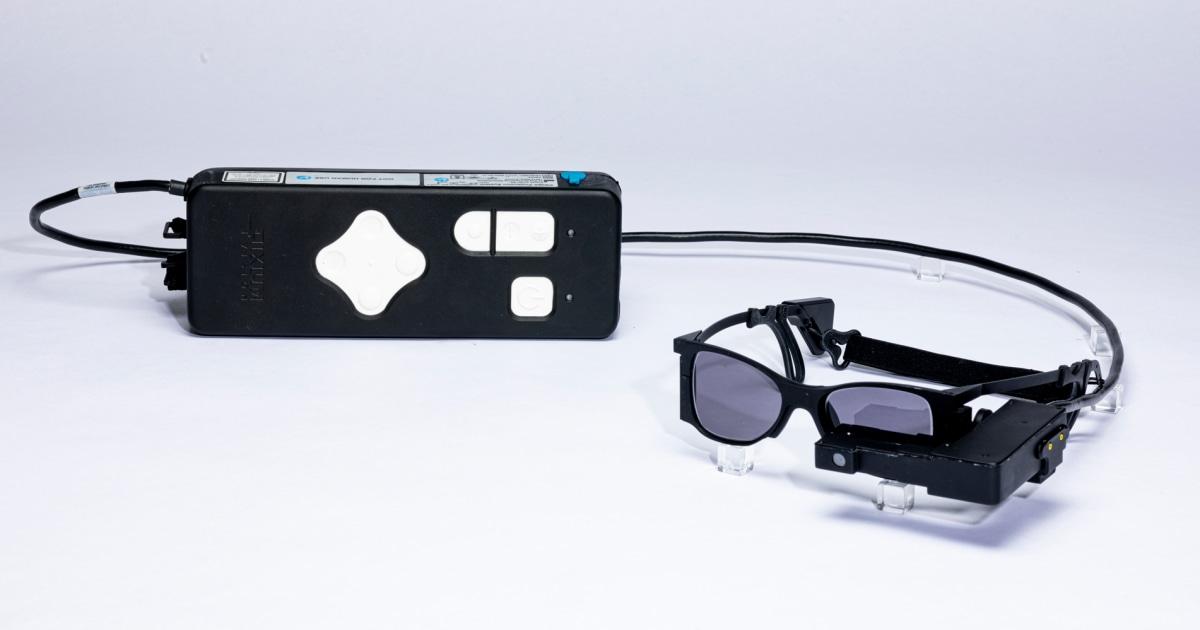Those who have the courage of fire can re-read Hatur-bezormne nohori arranged to be better covered behind the eyes
People with the leading cause of blindness were able to read again thanks to a tiny wireless chip implanted in the back of the eye and special enlarged glasses, according to the results of a study published Monday in the New England Journal of Medicine.
The study involved 38 European patients, all with an advanced stage of dry age-related macular degeneration (AMD), known as geographic atrophy.
There is no cure for AMD, which is caused by changes in a part of the retina called the macula caused by inflammation and debris build-up.The photoreceptor cells in the macula are responsible for producing sharp, detailed and colorful vision.When the disease has progressed to the stage of geographic atrophy, the cells deteriorate and die, and people lose their vision.central, meaning that a straight object may appear blurry or covered in a dark spot.
About 22 million people in the United States have AMD, and about a million have geographic degeneration, according to the American Macular Degeneration Foundation.
In the study, the participants, who had an average age of 79, were fitted with the “PRIMA device,” a system meant to replicate vision. Patients wear augmented reality glasses embedded with a camera that captures their visual field. What the camera “sees” is transmitted to the chip implanted in the eye in the form of infrared light. The chip converts the light into an electrical current, which stimulates the remaining healthy cells in the macula in a realistic way, enabling the brain to interpret signals the cells send as vision.
The image processor, which users must carry with them, allows patients to zoom in and out on images that are displayed in black and white.
80% after one year of improving practice with the Prima machine.Patients with side effects were the most associated with surgery: The study showed that 26 of the patients had bleeding.Most of the omissions were made within two months of the campaign.
“This is the first treatment method that has resulted in improved visual function in this patient population,” said Dr. Frank Holz, principal investigator of the study and chairman of the Department of Ophthalmology at the University Hospital in Bonn, Germany.
One patient, Sheila Irvine, 70, who was fitted with the Prima device at Moorfields Eye Hospital in London, said in a statement released by the hospital that her life before the implant was like "having two black discs in her eye, including the outside."Irvine, a self-described "bookworm" before losing her sight, said she could do crossword puzzles and read prescriptions.
Dr. Sunrir Garg, Professor of Ophthalmology Leah of Philaced waste, pretense, like lowliness, like low, and support.
“Even with new medical treatments, the best we can do is slow them down,” said Garg, who works with several pharmacists involved in treating AMD, including Apellis Pharmaceuticals, the maker of pegcetacoplan.This drug, which slows the progression of geographic atrophy, was recently approved in the United States and requires injection into the eye once every one to two months.“We can’t stop it and we can’t do anything to restore lost vision.”
Dr.Demetrios Vavvas, director of retinal services at Mass Eye and Ear in Boston, who was also not involved in the study, said the prime system is not without limitations.
Vavvas noted that the medical procedure necessary to install a chip in the eye does not require surgical experience and is not dangerous.
Vavwas said it is important to note that the device did not restore normal vision, as patients could only see in black and white rather than color, and that trial participants had to undergo considerable training to learn how to see with the device.He also said it was not clear whether improvements in visual acuity significantly improved patients' quality of life.
But during this time, Vavvas also committed to his potential goals, describing the current version of the name as an important step in the field of restoration.
"I think this device is the previous version.""Definitions are clear. Quality of life is very good. But it is better.
There may be new updates to the device in the next few years.
The PRIMA system was invented by Daniel Palanker, a professor of ophthalmology at Stanford University, and developed by Science Corporation, a California-based neuroengineering company.
Palanker said processing capabilities are being developed to increase the number of pixels in anything from 400 to 10,000.The new disorder has already been tested in mice and is being developed and developed for future trials in humans.With the help of the zoom lens, Pankerker said, that will allow patients to achieve 20/20 vision.
"We are also working on next-generation software that will allow patients to perceive not only black-and-white text but also natural grayscale images, such as faces," Palanker said.
Palanquer has the same characteristics as technology absorption, genarvator disease blind, gene disease blind, camphors and other genetic traits.
Garg and Vavvas are eager to see larger trials that provide more details about how the device improves patients' ability to function on a day-to-day basis.Vavvas suggested that future trials should include a control arm to understand the extent to which the device provides real benefits, for example compared to existing electronic magnifiers.
"It's something that's good enough for patients to say, 'Well, I've regained my independence because I can now pay my credit cards, print and address my envelopes and look at grocery labels,'" Garg said. "Those kinds of practical things I'd like to know more about."
Vavvas said, "This is a chronic disease that you will have for the rest of your life, so we need more than a year of follow-up to see other risks, other complications. Does that sign of efficacy that we see at 12 months remain two years later?"
While not calling the device a panacea, Wavvalar said the study is not a panacea for blindness, the research shows it could provide an important way to protect different types of brain-computer interfaces.








